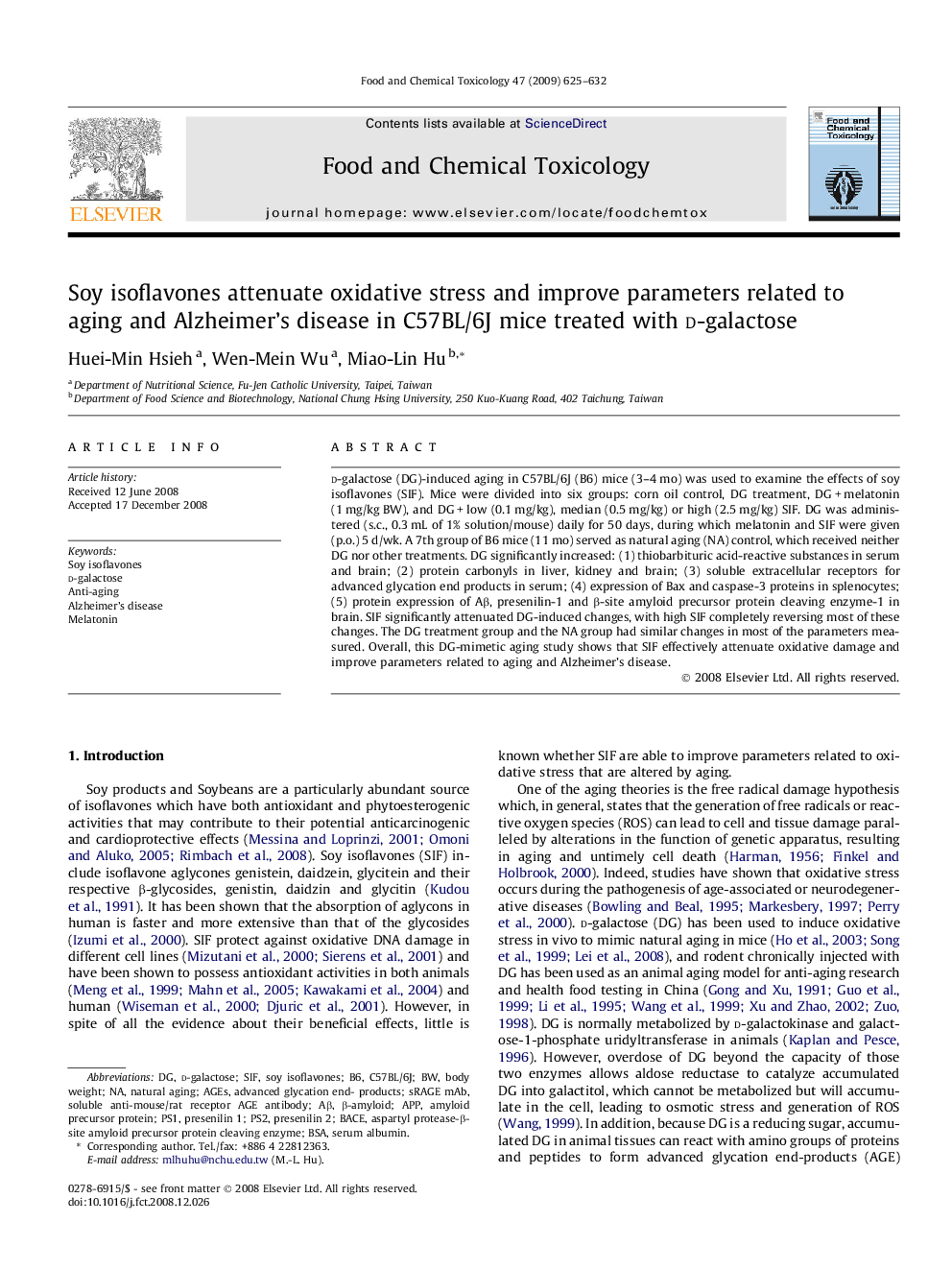| Article ID | Journal | Published Year | Pages | File Type |
|---|---|---|---|---|
| 2586542 | Food and Chemical Toxicology | 2009 | 8 Pages |
d-galactose (DG)-induced aging in C57BL/6J (B6) mice (3–4 mo) was used to examine the effects of soy isoflavones (SIF). Mice were divided into six groups: corn oil control, DG treatment, DG + melatonin (1 mg/kg BW), and DG + low (0.1 mg/kg), median (0.5 mg/kg) or high (2.5 mg/kg) SIF. DG was administered (s.c., 0.3 mL of 1% solution/mouse) daily for 50 days, during which melatonin and SIF were given (p.o.) 5 d/wk. A 7th group of B6 mice (11 mo) served as natural aging (NA) control, which received neither DG nor other treatments. DG significantly increased: (1) thiobarbituric acid-reactive substances in serum and brain; (2) protein carbonyls in liver, kidney and brain; (3) soluble extracellular receptors for advanced glycation end products in serum; (4) expression of Bax and caspase-3 proteins in splenocytes; (5) protein expression of Aβ, presenilin-1 and β-site amyloid precursor protein cleaving enzyme-1 in brain. SIF significantly attenuated DG-induced changes, with high SIF completely reversing most of these changes. The DG treatment group and the NA group had similar changes in most of the parameters measured. Overall, this DG-mimetic aging study shows that SIF effectively attenuate oxidative damage and improve parameters related to aging and Alzheimer’s disease.
